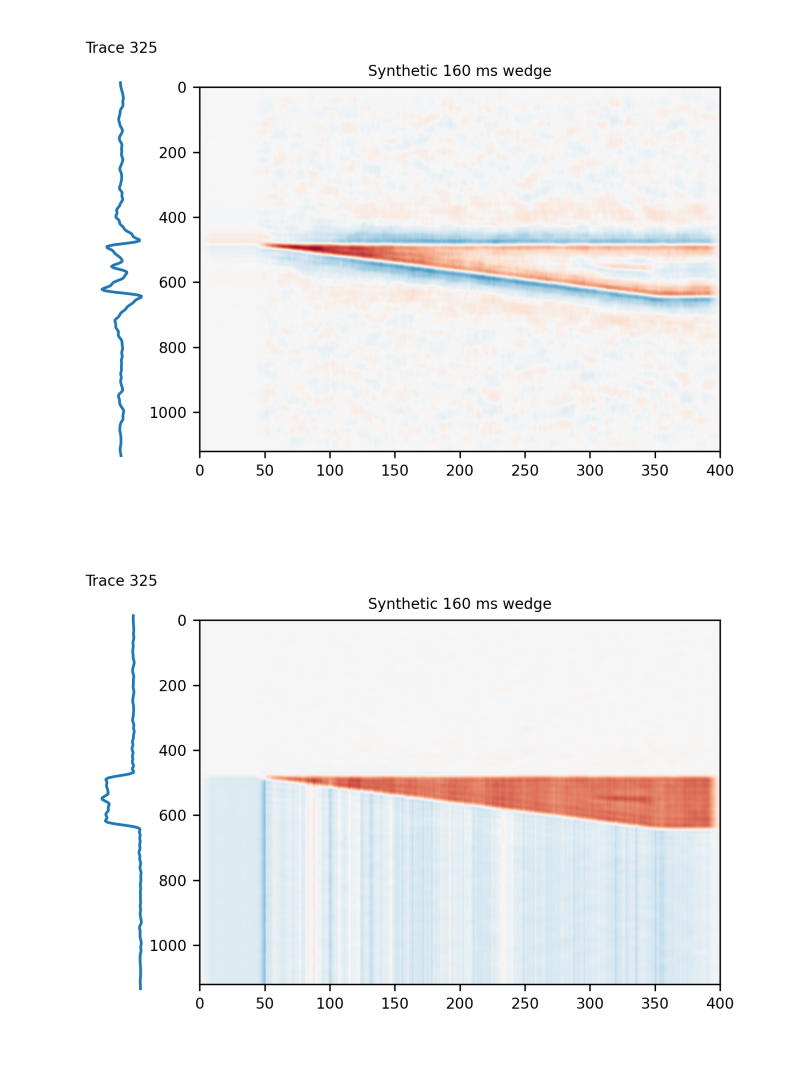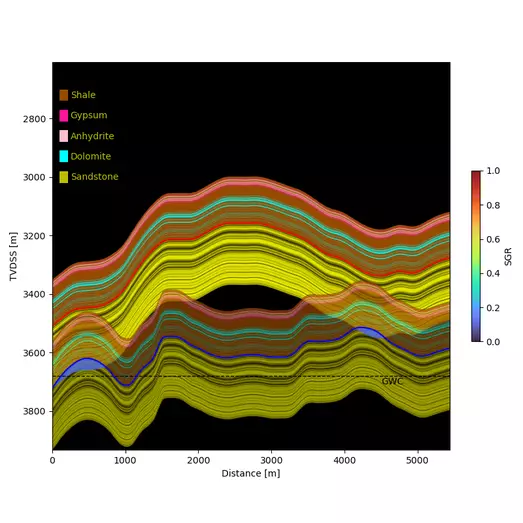TASK G&EO provides Geoscience consultancy & develops Earth Observation technology since 2021. E&P and CCS project have been successfully completed that involved pore pressure and fracture gradient prediction for exploration and development wells, seismic processing advice, quantitative interpretation of seismic data and CCS monitoring technology.
Earth Observation technology involved processing of Sentinel-1 and Sentinel-2 satellite data.
Contact: task_g_eo@ziggo.nl
CASE 1: Seismic data for monitoring of geological storage of CO2
TASK G&EO advises companies on how seismic data can used to monitor the geological storage of CO2. The shape, size and behaviour of the CO2 plume requires specific considerations on processing and interpretation for CCS monitoring.
Interference between layered CO2 accumulations causes misleading apparent high impedance loops within an overall low impedance CO2 plume. As a result the correlation with nearby well data is poor, picking of permeability barriers and conformance monitoring is compromised. On the left we see the 2010 Sleipner data with such significant interference. On the right we display a version with a reduced interference. Several loops can be picked through the plume with minimal change in character.
The 4D seismic data from the Sleipner CCS site is made available by the Sleipner Group for the purpose of encouraging innovative uses of the data and knowledge development of CO2 storage technology
License: https://lnkd.in/eGaJXhqB ;
Data: https://lnkd.in/ec8m9vWc

CASE 2: Low frequency inversion of seismic data
TASK G&EO develops techniques to invert seismic data for both thick and thin layers. The migration of CO2 in the subsurface may be in very thin or very thick layers that are difficult to resolve using standard seismic inversion techniques,
Inversion of seismic data to monitor CO2 migration requires resolving a broadband signal. TASK G&EO develops dedicated inversion techniques to resolve thin and thick layers.
Inverting seismic data for a weak thin layer embedded in a high contrast thick layer is a particularly hard problem, but can help resolving drilling hazards in salt, detect barriers in CO2 plumes or explore for carbonate reservoir.
This picture shows a synthetic seismic data with a weak impedance layer inside a high contrast wedge. The input data (above) is generated with a 5-50 Hz 90 degrees wavelet. The inverted result shows the weak layer at approximately trace 325 and 550 ms.

CASE 3: Fault seal analysis
Variation in pressure and lithology across faults that seal the CO2 storage accumulation can be investigated by a modified Allen Diagram.
Variation in pressure and lithology across faults that seal the CO2 storage accumulation can be investigated by a modified Allen Diagram.
Allan mapping (Allan, 1989) is used to visualizes juxtaposition of layers across faults. In the context of CCS in a depleted field we analyse variation in permeability, chemical reactiveness and pressure.
In this Allan Display the brightness of the each layer increases for less favourable aspects of these layers. The blue Muschelkalk layer brightens with chemically reactive marl volume, the red Solling/Röt layer brightens with an increase in evaporite fraction and the green reservoir (Hardegsen/Detfurth and Volpriehausen) brightens with an increase in porosity and reduced shale content.
The pre-production Gas Water contact is indicated by the yellow dashed line. Due to production and lack of aquifer support more than 300 Bar pressure differential is expected between the depleted reservoir and the surrounding rock.
Data: https://lnkd.in/e_mBkjuZ
Allan, U.S. (1989) Model for hydrocarbon migration and entrapment within faulted structures. AAPG Bull., 73, 803-811


